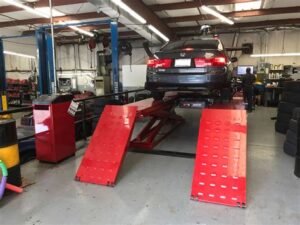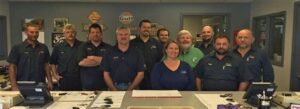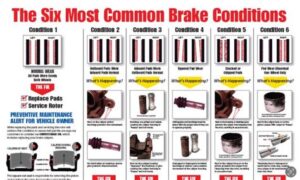Having your car aligned is a crucial step in ensuring a smooth and safe driving experience. However, it’s frustrating to discover that your vehicle drifts to the right even after a professional alignment. In this article, we will explore the complex issue of car pulling to the right after alignment, delving into its common causes and the signs to watch for. We’ll provide a comprehensive guide on how to diagnose and resolve this problem, along with preventive maintenance tips to keep your vehicle’s performance in check. Whether you’re experiencing this issue firsthand or simply want to be informed, our insights will equip you with the knowledge to understand and rectify car pulling after an alignment, ensuring your travels remain safe and enjoyable.
Understanding Car Pulling To Right After Alignment Issues
When a vehicle is car pulling to the right after a wheel alignment, it can be frustrating and indicative of underlying mechanical problems. Understanding the nuances of alignment settings and their interactions with various components of your vehicle is crucial for resolving these issues.
Wheel alignment generally involves adjusting the angles of the wheels to ensure they make contact with the road correctly and influence vehicle handling. If alignment adjustments are not done correctly, or if other components are worn out, the vehicle may exhibit symptoms like car pulling to one side.
| Component | Impact on Alignment | Potential Issue |
|---|---|---|
| Tires | Uneven wear can lead to poor alignment | Causes pulling due to varying friction |
| Suspension | Worn components can affect wheel angles | Resulting in misalignment and unstable driving |
| Steering System | Imbalances can cause off-center steering | Leading to drifting or pulling to one side |
It’s essential to take note that alignment isn’t a standalone solution—it interplays with several critical components. For instance, if your car pulling problem persists after a proper alignment, it may point to one or more issues in the tire, suspension, or steering systems that need immediate attention. Understanding these interactions is key to effectively diagnosing and resolving the issue.
Common Causes Of Car Pulling After A Wheel Alignment
Experiencing car pulling after a wheel alignment can be frustrating and concerning. Understanding the common causes can help you address the issue effectively. Here are some typical reasons why your vehicle may be pulling to the right:
- Uneven Tire Pressure: One of the most frequent culprits is unequal tire pressure. If one tire is significantly inflating compared to others, it can cause your car to pull to one side.
- Worn Suspension Components: Components such as bushings, tie rods, and struts can wear out over time, adversely affecting alignment and steering precision.
- Tire Wear: Uneven tire wear can lead to car pulling. Tires that are balding, cupped, or misaligned can cause your vehicle to drift to one side.
- Calibration Errors: If the alignment wasn’t performed correctly, it could result in misalignment, leading to pulling issues.
- Road Conditions: Sometimes, the road itself may be contributing to car pulling, especially on sloped or worn surfaces that can cause a drift.
- Faulty Wheel Bearings: Damaged or worn wheel bearings can lead to instability and cause the car to pull to one side during driving.
Identifying these common causes can help you determine the necessary steps to take. If the problem persists despite addressing these issues, consider consulting a professional mechanic for further inspection.
Signs Indicating Your Car Is Pulling To The Right
If your car is pulling to the right after an alignment, there are several noticeable signs that can help identify the issue. Here are some common indicators to watch for:
- Steering Wheel Position: If the steering wheel is off-center when driving straight, it may signal that your vehicle is pulling to one side.
- Uneven Tire Wear: Check your tires for uneven wear patterns; this can indicate that the alignment is not correct, leading to a pulling sensation.
- Increased Steering Effort: A requirement for excessive steering input to keep the car straight can be a strong sign that it’s pulling.
- Pulling Sensation: If you find that the car consistently drifts or pulls to the right while driving on a straight road, that is a clear sign that an alignment issue may exist.
- Braking Response: If your car pulls to the right when braking, this could indicate an issue with the alignment or brakes.
Being aware of these signs can help you address any alignment issues promptly and maintain the handling and safety of your vehicle. Always consult a professional mechanic if you suspect your car is pulling to the right to diagnose and resolve the issue effectively.
How To Diagnose And Fix Car Pulling After Alignment
Diagnosing and fixing your car pulling to the right after an alignment can be crucial for your safety and driving experience. Here’s a step-by-step guide to help you identify the problem and resolve it effectively.
Step 1: Check Tire Pressure
Ensure that all tires are inflated to the manufacturer’s recommended pressure. Uneven tire pressure can cause your car to pull to one side. Use a tire pressure gauge to confirm that each tire matches the specifications found in your owner’s manual.
Step 2: Inspect Tires for Wear
Examine your tires for uneven wear patterns. If one tire is more worn than the others, it could contribute to the pulling. Consider rotating or replacing tires if they show significant signs of wear.
Step 3: Examine Wheel Alignment
Even if your vehicle has recently been aligned, it’s worth checking. Misalignment can occur due to hitting potholes or curbs. A professional can perform a precise alignment check to ensure all wheels are aligned correctly.
Step 4: Check Steering and Suspension Components
Look for any loose or damaged parts in the steering and suspension system. Components like control arms, bushings, and tie rod ends should be intact. A qualified mechanic can help diagnose any issues in this area.
Step 5: Perform a Road Test
Take your vehicle for a short drive on a level road. Pay attention to how it behaves during acceleration and deceleration. A consistent pull to the right can indicate issues that need further investigation.
Step 6: Consult a Professional
If you’ve performed the above checks and the issue persists, it may be time to consult a professional mechanic. They have experience in diagnosing more complex issues that could be causing your car pulling, such as drivetrain issues or brake problems.
By following these steps, you can successfully diagnose and fix the car pulling issue after alignment, ensuring a safer and more comfortable driving experience.
Preventing Car Pulling: Maintenance Tips And Best Practices
To effectively prevent your vehicle from car pulling issues, regular maintenance and attention to key components are essential. Here are some best practices to follow:
| Maintenance Task | Frequency | Notes |
|---|---|---|
| Wheel Alignment | Every 6,000 miles or as required | Check alignment after hitting a pothole or curb. |
| Tire Rotation | Every 5,000 to 7,500 miles | Helps to ensure even tire wear. |
| Tire Pressure Check | Monthly | Keep tires inflated to recommended levels. |
| Brake Inspection | Every 10,000 miles | Ensure even braking to prevent pull. |
| Suspension System Check | Every 12,000 miles | Inspect for wear and tear on components. |
In addition to these tasks, be mindful of car pulling symptoms. Any changes in handling, steering wheel position, or tire wear should prompt further investigation. Maintaining your vehicle’s alignment, suspensions, brake system, and tire condition not only enhances driving comfort but also contributes to the overall safety and longevity of your vehicle.
Frequently Asked Questions
What could cause a car to pull to the right even after an alignment?
Several factors, such as uneven tire pressure, worn suspension components, or issues with brake calipers, can cause your car to pull to the right after an alignment.
How can I check if my tire pressure is causing the pull?
You can check tire pressure by using a pressure gauge, ensuring all tires are inflated to the manufacturer’s recommended PSI, which is usually found in the owner’s manual or on a sticker inside the driver’s door.
What role do brake calipers play in a car pulling to one side?
If a brake caliper is sticking or malfunctioning, it can cause uneven braking force on the wheels, resulting in the car pulling to one side.
How often should I have my vehicle’s alignment checked?
It’s recommended to check your vehicle’s alignment at least once a year or whenever you notice irregular tire wear or changes in handling.
Could tire wear patterns indicate alignment issues?
Yes, uneven tread wear, such as cupping or scalloping, can indicate that your wheels are out of alignment and can lead to pulling.
Should I have all four wheels aligned?
Yes, aligning all four wheels can ensure the vehicle drives straight and evenly distributes tire wear, especially for AWD (All-Wheel Drive) vehicles.
Is it necessary to have a professional mechanic diagnose the pulling issue?
While you can check some basic things yourself, it is advisable to have a professional mechanic diagnose the problem to accurately identify any underlying issues.





